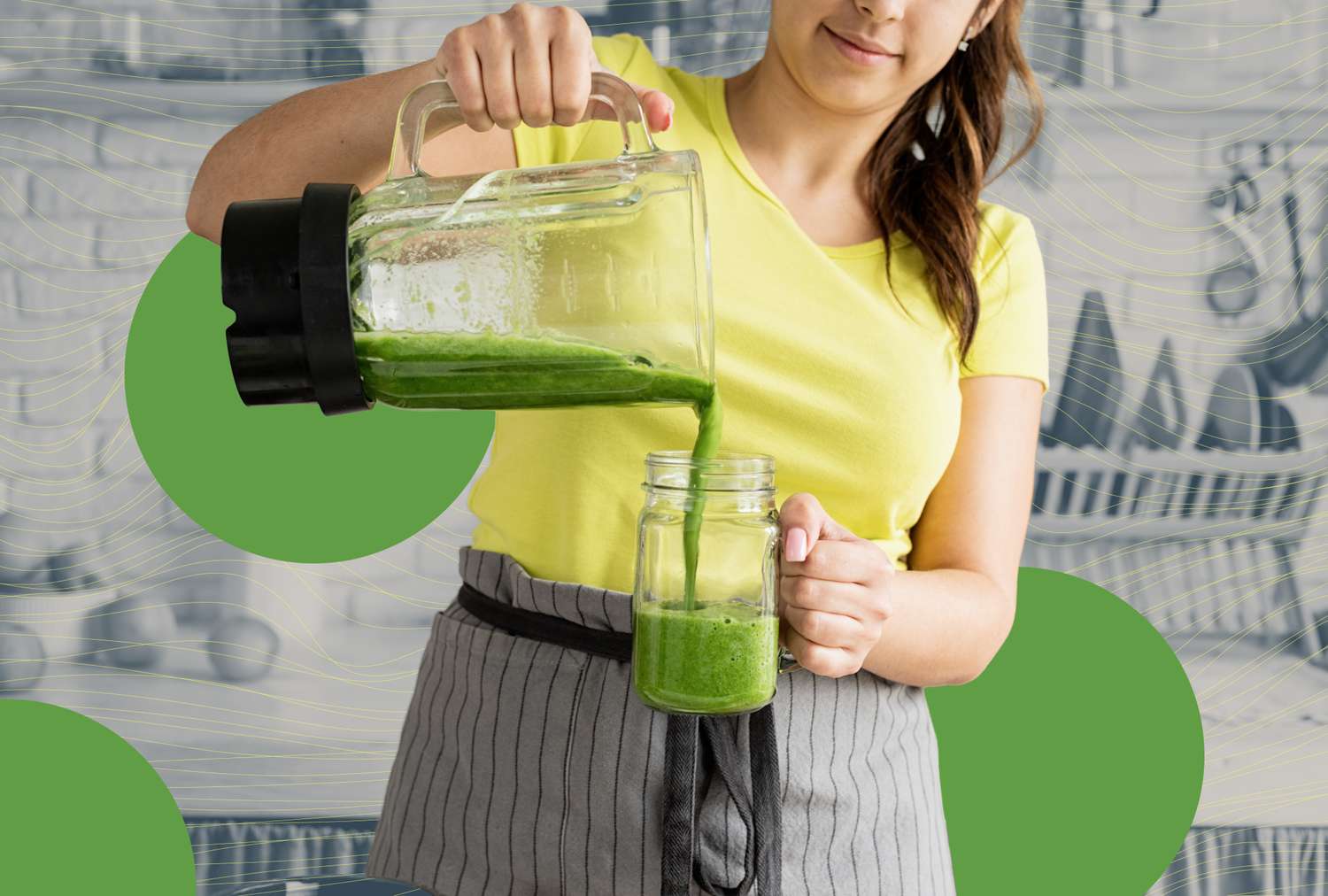The wellness space has been obsessed with fiber lately, and rightfully so. In the U.S., only 7% of adults meet the recommended intake for fiber, which is 21 to 38 grams per day. However, getting enough fiber is linked to a lower risk of common health conditions, including heart disease, diabetes, and digestive issues like constipation—so it’s important to meet the mark.
But if you’re not a fan of counting grams (same, TBH), how can you tell you’re getting enough fiber? Ahead, dietitians share how to gauge your intake, along with practical tips for eating more of the vital nutrient.
Signs You’re Getting Enough Fiber
As mentioned, the average adult needs about 21 to 38 grams of fiber per day. Here’s how to tell you’ve got your fiber intake in check.
You feel energized after eating.
“Fiber helps slow the absorption of sugar into the bloodstream,” explains registered dietitian Maddie Pasquariello, MS, RDN. So, when you eat a meal rich in carbs, adding fiber slows digestion and keeps you full for longer. This contributes to more sustained energy levels, rather than energy spikes and crashes, Pasquariello says.
You’re satiated between meals.
While there are many factors that influence post-meal satiety (such as the total volume and calories), fiber is high up on the list. This is due to the digestion-slowing effects of fiber, which keeps you satisfied, says registered dietitian Samantha Peterson, MS, RD. Thus, if there’s enough fiber in your meals, you’ll likely feel full for longer after eating, per Pasquariello.
For context, “if you feel comfortably full for three to four hours after a balanced meal, that’s a positive sign,” Peterson adds.
It feels easy to go number two.
We get it: Pooping isn’t the most glamorous subject. But paying attention to your stool is one of the best ways to tell if you’re getting enough fiber. The reason? Fiber adds bulk to stool, making it easy to move through your system. As a result, “adequate fiber will result in smooth, sausage-like stools that don’t take much effort to pass when you go to the bathroom,” Pasquariello says.
You go to the bathroom regularly.
When your stools are easy and comfortable to pass, you’ll be more likely to go on a regular schedule. “A good sign you’re getting enough fiber is going to the bathroom regularly,” Peterson says. “Most people feel best when they’re having a bowel movement once a day or every other day, but aiming for at least once daily is the goal.”
Your cholesterol levels are within a healthy range.
Another sign you’re getting sufficient fiber? Healthy cholesterol levels. According to Petseron, fiber—specifically, soluble fiber—acts like a sponge in your digestive tract, where it binds to cholesterol particles and removes them from the body via stool. Over time, this can support healthier cholesterol levels, including HDL (“good”) and LDL (“bad”) levels, Peterson says.
Signs You’re Not Getting Enough Fiber
Because fiber is so important for overall health, your body will sound the alarm when you’re not getting enough. Here’s what that might look like.
You’re sluggish and tired.
Without adequate fiber, your body will quickly absorb sugar. This will lead to a spike in energy, followed by a crash. In turn, your energy might be low, imbalanced, or unpredictable, Pasquariello says.
You feel hungry soon after eating.
Due to the satiating effects of fiber, a low intake can leave you feeling hungry soon after eating. “If you finish meals and still like to eat more, or find yourself grazing often, low fiber may be part of the puzzle,” Peterson says.
You have hard, lumpy stools that are difficult to pass.
If your stools are hard—either in one solid mass or as individual pellet-sized lumps—it might be a sign of low fiber intake (along with inadequate hydration), Pasquariello says. This is often accompanied by straining, as you’ll need more effort to pass the stool.
You’re feeling backed up.
It’s normal to feel constipated every now and then. However, “if you’re often constipated, skipping days, or feel like things are ‘backed up,’ it may be a sign your diet is falling short on fiber,” Peterson says. This constipation can also lead to bloating and gas, further adding to your digestive woes.
Your cholesterol levels are increasing.
“If you’re not eating enough fiber, especially soluble fiber, your cholesterol may trend higher because nothing is helping to ‘catch’ and clear it out,” Peterson says. This is noteworthy because high cholesterol increases the risk of heart problems, including heart disease. “Of course, cholesterol is influenced by many factors, including genetics, overall diet quality, and intake of saturated fat, but [eating] fiber is a simple, protective piece of the puzzle that often gets overlooked,” Peterson adds.
Ways to Increase Your Fiber Intake
If the signs of low fiber intake sound familiar, it might be time to pay more attention to the nutrient. Your best bet is to eat more whole, plant-based foods, as these are the primary sources of fiber. As Pasquariello notes, “any time you can swap an ultra-processed food for a whole food derived from plants, you’re likely to be better off in the fiber department.” (Just be sure to increase your fiber intake gradually, as eating too much too soon can cause unwanted bloating, gas, and digestive upset, Pasquariello says.) But if you’re looking for specific ways to get more fiber, you’re in luck. Here are our favorite tips and ideas, as recommended by dietitians.
Incorporate vegetables into every meal.
Instead of approaching vegetables as just a side dish, build them into the main part of your plate, Peterson suggests. Examples include tossing spinach into scrambled eggs, adding shredded carrots to a sandwich, or roasting extra vegetables with dinner. “The more often you include them, the more naturally your fiber adds up,” she says.
If needed, try a visual approach and aim for one to three colorful add-ins per meal. (This can also include fruits, depending on the dish, BTW.) Not only will this boost your intake of fiber, but it will make your plate more appealing without the hassle of counting grams of fiber, Peterson says.
Add fiber-rich toppings to meals.
The next time you’re eating a salad, grain bowl, chili, or soup, top it off with high-fiber ingredients. “It may seem like an afterthought, but adding some pumpkin seeds, walnuts, or even some croutons can add a bit more fiber to these meals,” Pasquariello says. Bonus: high-fiber toppings also tend to be crunchy, further enhancing the texture of your dish.
Choose complex carbohydrates whenever possible.
When choosing carbohydrates, go for the complex kind. This typically includes whole foods that are as close to their natural form as possible, such as oats, beans, lentils, quinoa, or starchy vegetables like sweet potato and squash, Peterson suggests. Compared to refined carbs (i.e., white bread, pastries, white rice, etc.), complex carbs have more fiber, along with additional vitamins and minerals.
For an easy place to start, “swap white rice for quinoa, add lentils to soup, or bake sweet potato instead of fries,” Peterson says. “Over time, these swaps become second nature, and your fiber intake adds up without the extra effort.”
Eat more high-fiber snacks.
When done mindfully, snacking can be a simple way to boost your fiber without overhauling meals, Peterson says. Need ideas? High-fiber snack ideas include fruit with nuts or seeds, chopped vegetables with hummus, or air-popped popcorn. “These kinds of snacks keep your energy steady between meals while quietly moving you closer to your daily fiber goals; no complicated tracking required,” Peterson says.


